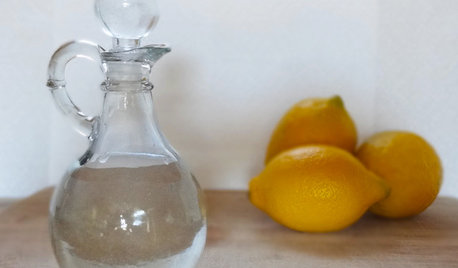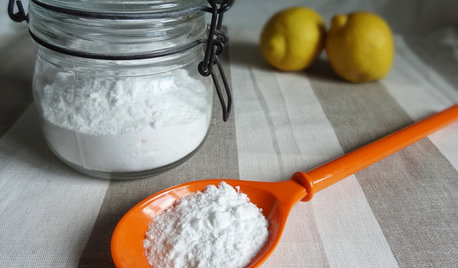effects of hydrogen peroxide on seedlings
mrbreeze
18 years ago
Related Stories

LIFEThe Top 5 Ways to Save Water at Home
Get on the fast track to preserving a valuable resource and saving money too with these smart, effective strategies
Full Story
HOUSEKEEPINGEasy Green: Steam Cleaners for a Chemical-Free Sparkle
Deep clean and sanitize by harnessing high-temperature water for floors, curtains and clothes as immaculate as they are healthy
Full Story
HOUSEKEEPINGHow to Clean Grout — Stains and All
If your grout is grossing you out, this deep-cleaning method will help it look new again
Full Story
HOUSEKEEPINGVinegar and Voilà: Clean Your House the Natural Way
Ditch the commercial cleaners for nontoxic, inexpensive and versatile white vinegar
Full Story
MOST POPULAR33 Magic Household Cleaning Tips
Houzzers from around the world share their tips for transforming housework into child’s play
Full Story
CLEANINGEco-Friendly Tips and Tricks for Cleaning Your Home
Are you wary of using chemicals to clean? These simple products and tricks will keep your home spotless naturally
Full Story
PATIOSGet Backyard Privacy the Subtler, Stylish Way
Why settle for a hulking brick wall when plants, screens and other refined backyard dividers do the job with panache?
Full Story
HOUSEKEEPINGOut, Darn Spot! Tips for Removing Carpet Stains
Know the right solutions and when to use them to prevent stains from pets, soda, chocolate, blood and more
Full Story
HOUSEKEEPINGBaking Soda: The Amazing All-Natural Cleanser You Already Own
Battle grime, banish odors and freshen clothes with this common nontoxic cupboard staple
Full Story
GARDENING GUIDESCommon Myths That May Be Hurting Your Garden
Discover the truth about fertilizer, soil, staking and more to keep your plants healthy and happy
Full StoryMore Discussions







tapla (mid-Michigan, USDA z5b-6a)
Related Professionals
Otsego Landscape Architects & Landscape Designers · Harvey Landscape Architects & Landscape Designers · Annandale Landscape Contractors · Canton Landscape Contractors · Chesapeake Ranch Estates Landscape Contractors · Gloucester Landscape Contractors · Southbury Landscape Contractors · Webster Groves Landscape Contractors · West Orange Landscape Contractors · Silver Firs Landscape Contractors · Merrifield Landscape Contractors · Holbrook Fence Contractors · Leander Fence Contractors · Santa Barbara Fence Contractors · Simi Valley Fence Contractors